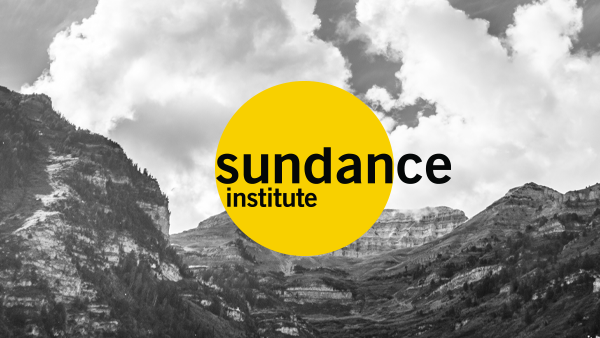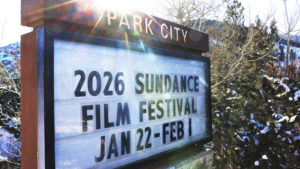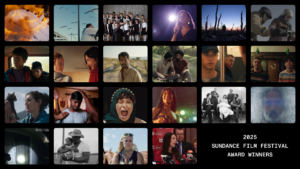Philip Himberg
Philip Himberg is producing artistic director of the Sundance Institute Theatre Program. He is currently at the Theatre Lab on Manda, a two-week exchange and development program providing East African artists with guidance in their creative development toward final production.
In my rehearsal, we switch from reading a scene in English to reading the same scene in Amharic. I warn the actors ahead of time: “I won’t be able to direct you in this language. I’ve tried to learn Kiswahili this past year, but Amharic?!” They smile. And then they begin, and after only a few minutes, I stop them.
“Can you try that again, mindful of the fact that the stakes are higher in this scene?” What am I doing? I am a blind man staring at the sensual scrawling of the Amharic alphabet and deciding how these talented actors should ‘adjust’ their performance. We all laugh, but the truth is, a good play communicates in any language, and I find that perhaps I can offer a few suggestions—even in a language I’ve never heard before.

Photo by Philippa Ndisi-Hermann
The work is firmly underway now, and the company of artists that makes up the 2011 Sundance Institute Theatre Lab on Manda is decidedly serious and up to the task. Last year’s group tended to stay up late, and—shall we say—were more aligned with the partying mode. But this year, by 10:00 p.m. on most nights, Diamond Beach Village’s Blue Moon Bar is dark and people are in their rooms preparing for the day ahead.
Sundance Institute executive director Keri Putnam visited the Lab for our first three days and it was a great joy to have her here, accompanied by her charming and brilliant daughter, Lucy. Keri was able to observe most of the plays in rehearsal and meaningfully contribute to the conversations about each project’s strategy to move forward.
My own assignment, directing Desperate to Fight, a play by Ethiopian writer Meaza Worku Berehanu, has been the focus of my time since Tuesday, when rehearsals began in earnest. Desperate to Fight is the story of a woman, Marta, living in Addis, who has put three marriages behind her, but still deeply wants to find her soul mate.
Unusual in any culture, but fairly shocking for an Ethiopian community, Ms. Berehanu wants to explore a wildly passionate female, who despite the turmoil of partnerships that didn’t work out, has the optimism to expect the love of her life just around the corner. Marta is impetuous, larger than life, and maybe a bit over exuberant, but she truly believes that being in a relationship wants to be a no holds barred affair – bursting with love, with anger, with joy. Fights need to be real, she tells us, not fake! She takes her cue from the couple next door, whom we do not see, but she describes to us.
Meaza wrote the play in English, not her native language, and then translated it back to Amharic – a gorgeous sounding language, specific to Ethiopia, with its own exotic looking alphabet, that seems like an orchestral score on the page. I have two English speaking actors in the play – Mũmbi Kaigwa, playing Marta, who is Kenyan, and Philip Luswata, a Ugandan artist, who plays each of the three husbands, conjured in Marta’s memory.
Another actor, Andnet Dagnew from Ethiopia, is here so that we might also try out the Amharic version, which will be the initial production in the year ahead. Each morning we sit by the pool at another home we are renting – Perico, owned by a Spanish family – and line by line, beat by beat we explore the text, asking many questions of the playwright and proffering suggestions so that we can land her vision. It is actually not very different than any stateside Sundance Lab, except that goats baa loudly in the background, the surf of the ocean laps the shore, and plumeria blossoms aroma the air around us.
In other rooms, three other projects are hard at work. At Wayne McGregor’s dance studio, Akili, a Tanzanian play titled Safari Ya Mwandale by Irene Sanga, has five Tanzanian performers working in Kiswahili. This is a musical and movement piece and is being lead by Hope Azeda, a director from Rwanda.
Margaret Namulyanga’s play, He Is Here He Says I Say directed by Liesl Tommy, is a play for a solo actor and voices and uses the Yoga Studio at Diamond Beach. Lastly, Kenyan composer and writer Eric Wainaina is consulting daily with British director Indhu Rubasingham on new and meaningful re-writes to his musical play, Mo Faya. Roberta Levitow, Sundance Artistic Associate for East Africa, oversees all of this.
In the afternoons, our Creative Advisors offer workshops. Tuesday was Lynn Nottage’s playwriting workshop and today Liesl Tommy will offer a directing one. On Saturday, Stew will offer a music workshop. On alternate afternoons, we give the playwrights time to work on their own.
So – all is well as we head toward the end of week one on Manda Island. As I sit on the lanai, with my Kahawa (coffee), I breathe in the sweet moist air of this island paradise and feel very lucky indeed. Why not? In about six hours, after rehearsals are done, I’ll jump into the waters of the Indian Ocean as I do every day before sunset, and remember what ties all of us together in this diverse and beautiful world.




